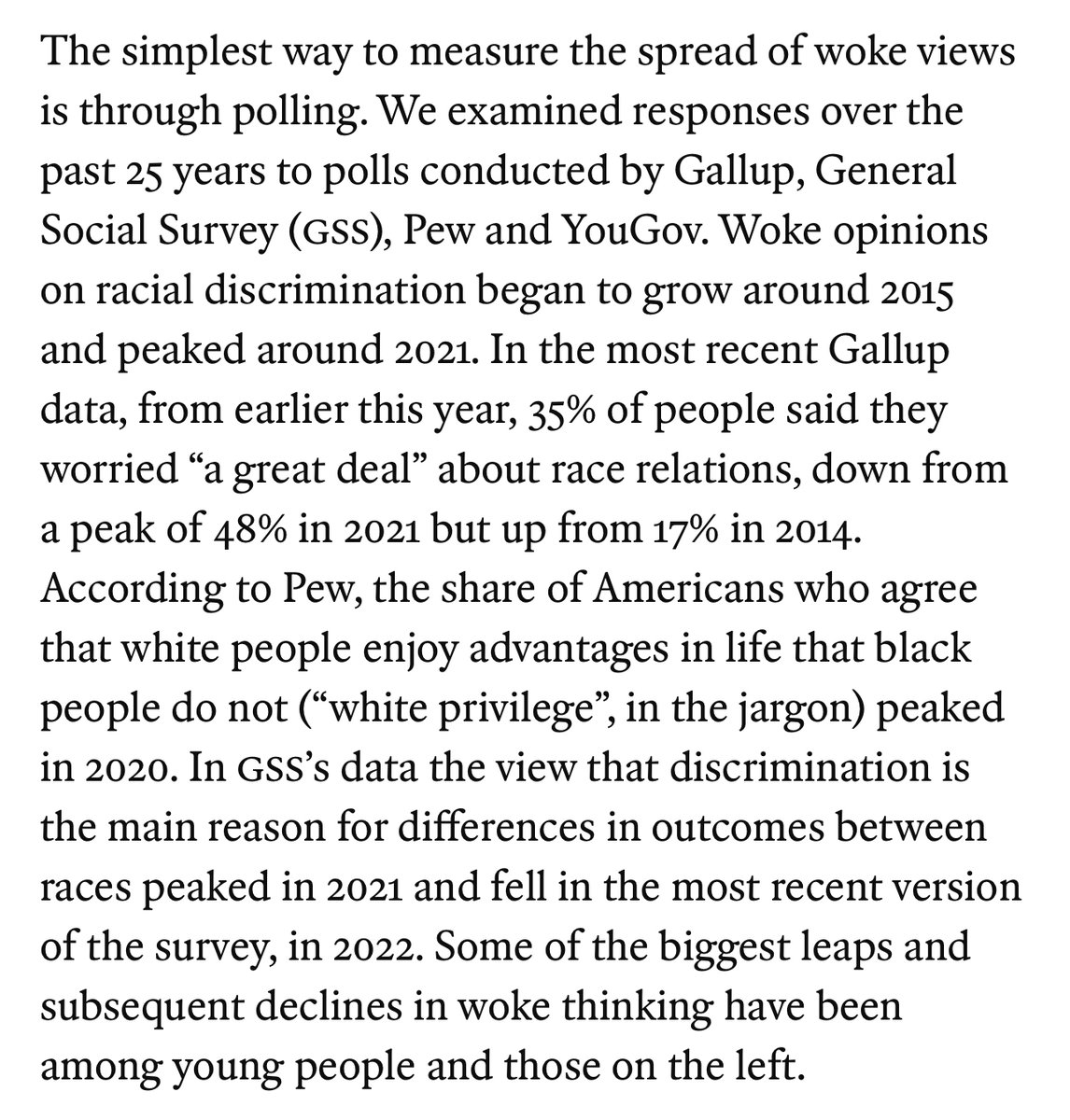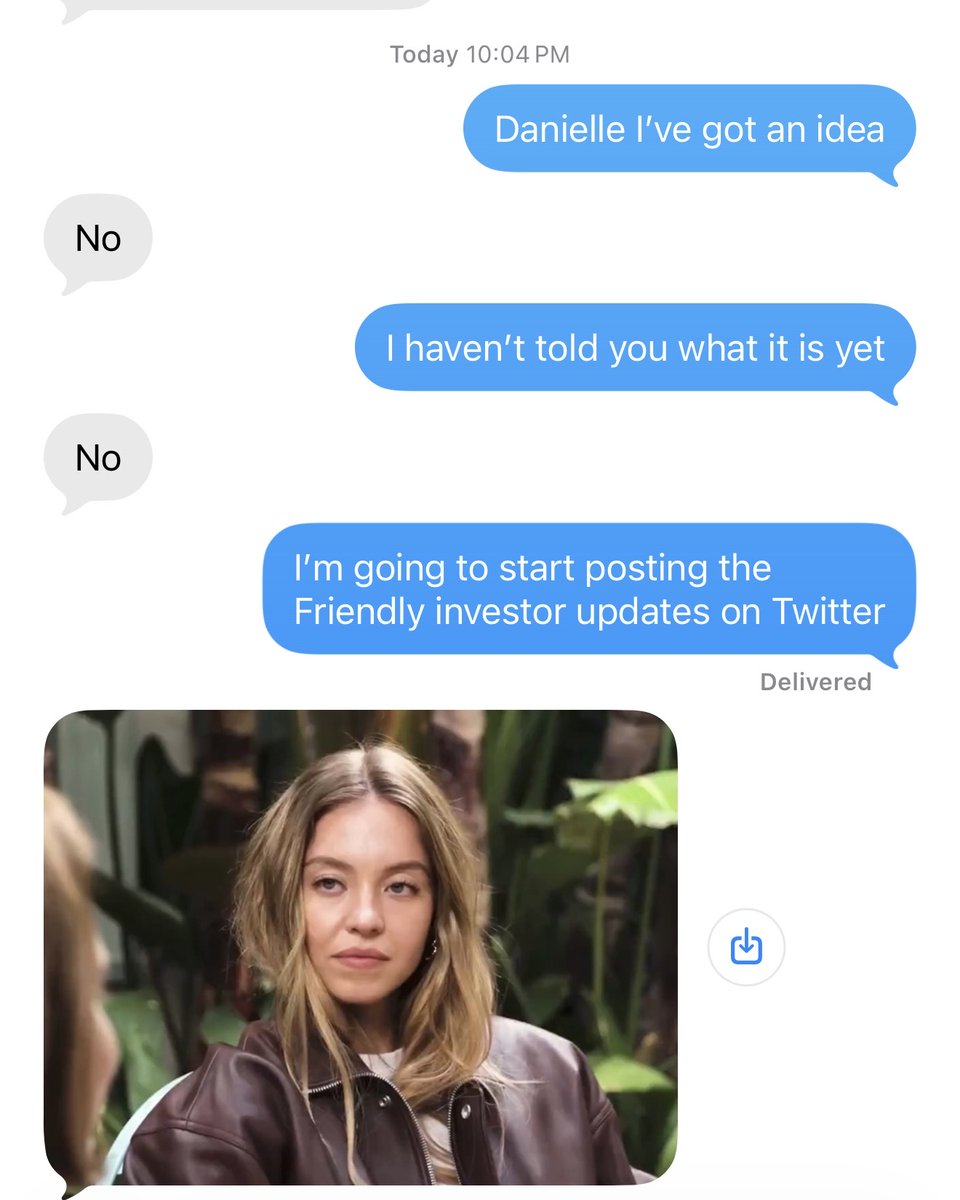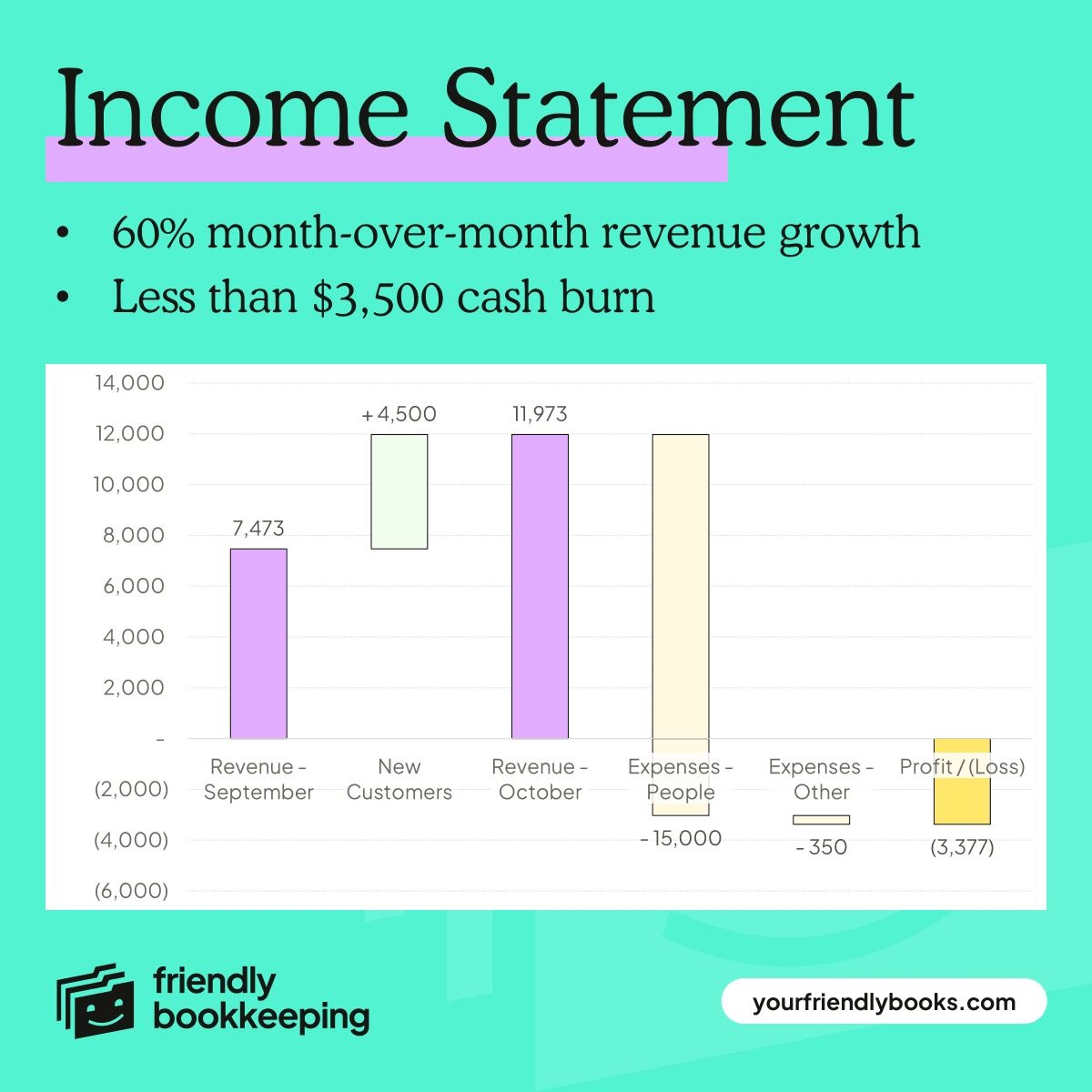The Economist published a brutal takedown of the woke movement this week.
tldr: Wokeism isn’t dead yet, but it’s suffering a significant (and much needed) statistical decline.
Let’s dive into the numbers 👇
tldr: Wokeism isn’t dead yet, but it’s suffering a significant (and much needed) statistical decline.
Let’s dive into the numbers 👇

Contrary to what many believe, 2020/2021 represented the *peak* of wokeism, not the genesis.
The woke movement gained much of its momentum in 2015, with—you guessed it—the announcement of Donald Trump’s presidential campaign.
The woke movement gained much of its momentum in 2015, with—you guessed it—the announcement of Donald Trump’s presidential campaign.

This peak is evident across public opinion, the media, and higher education alike.
The business world was slower to adopt wokeism, only doing so after the death of George Floyd. But it also now jettisoning it (yes, DEI really was a ZIRP phenomenon).
The business world was slower to adopt wokeism, only doing so after the death of George Floyd. But it also now jettisoning it (yes, DEI really was a ZIRP phenomenon).

The percent of people worried “a great deal” about race relations declined from 48% in 2021 to 35% today.
Kids and even some leftists are tired of wokeism: “Some of the biggest leaps and subsequent declines in woke thinking have been among young people and those on the left.”
Kids and even some leftists are tired of wokeism: “Some of the biggest leaps and subsequent declines in woke thinking have been among young people and those on the left.”

People aren’t burned out on just the racial aspects of wokeness. Opposition to trans athletes playing competitive sports outside of their biological sex has increased from 53% to 61% over the last two years.
The #MeToo movement is also apparently running out of steam.
The #MeToo movement is also apparently running out of steam.

Even the mainstream media is finally realizing that people are tired of woke indoctrination. Newspapers are using terms like “intersectionality” and “microaggression” less often.
In the NYT, “white privilege” went from being published 2.5 times per 1M words to just 0.4 times.
In the NYT, “white privilege” went from being published 2.5 times per 1M words to just 0.4 times.

The same decline in woke-speak is also seen in academic papers.
Given how much of the media and online discourse is downstream of academia, this is (hopefully) an additional leading indicator that wokeism will continue its downward trajectory.
Given how much of the media and online discourse is downstream of academia, this is (hopefully) an additional leading indicator that wokeism will continue its downward trajectory.

Speaking of universities, calls for professors to be fired for expressing unpopular beliefs also peaked in 2021 and is now on the decline. (Remember, academic freedom only applies if you’re chanting “from the river to the sea,” not when you’re questioning affirmative action.) 

Perhaps most important for regular Americans, wokeism is declining in the workplace.
Mentions of DEI in earnings calls is only 3x compared to before the death of George Floyd (compared to 14x in the near aftermath).
DEI exec roles are also rapidly disappearing (again, ZIRP).


Mentions of DEI in earnings calls is only 3x compared to before the death of George Floyd (compared to 14x in the near aftermath).
DEI exec roles are also rapidly disappearing (again, ZIRP).


Companies are terrified of the backlash and boycotts that Budweiser and Target recently faced. @MattWalshBlog and @robbystarbuck are making a tangible difference in restoring sanity to corporate America. 

Lastly, this summary of wokeism—coming from a mainstream, center-left business publication—is absolutely brutal.
If more mainstream outlets adopt this mindset, maybe there is some small measure of hope for our future.
If more mainstream outlets adopt this mindset, maybe there is some small measure of hope for our future.

• • •
Missing some Tweet in this thread? You can try to
force a refresh


























